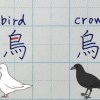
It may not be historically accurate, but it’s one-hundred percent real!
The Edo Period in Japan, from 1603 to 1868, was when the country was cut off from the rest of the world. Literature and illustrations made during that time period are a great insight into how people lived, thought, and even made snowmen back then.
But toward the end of the Edo Period, Japan started getting pretty interested in foreign countries. Nick Kapur, a Japanese and East Asian historian, recently tweeted out images from one book that show Japan’s isolated interpretation of the Western world.
▼ As Mr. Kapur explains, this is an image of George Washington (with the bow)
alongside the “Goddess of America.” (Click image to enlarge)
A thread of images from a Japanese illustrated history of America from 1861.
— Nick Kapur (@nick_kapur) November 14, 2018
Here is George Washington (with bow and arrow) pictured alongside the Goddess of America. 1/ pic.twitter.com/LoF54y54bL
In the above image, George Washington is referred to as “Father of the Country, Washin(g)to(n),” with his name spelled with the kanji for “story,” “holy,” and “east.”
The illustrations come from Osanaetoki Bankokubanashi (“Children’s Illustrated Tales from 10,000 Countries”), a book written by Kanagaki Robun and illustrated by Utagawa Yoshitora in 1861, eight years after Commodore Perry demanded that Japan open its borders to the world.
Osanaetoki Bankokubanashi is based on two second hand sources, Kaikoku Zushi (“Drawings of Foreign Countries”) and Amerika Ittōshi (“American Unified History”). Perhaps the fact that the author and illustrator were creating these pages third-hand explains some of these magnificent creations:
▼ Such as George Washington stomping a tiger…
And here is George Washington straight-up punching a tiger. 7/ pic.twitter.com/gM1BwRahEa
— Nick Kapur (@nick_kapur) November 14, 2018
▼ …the second President of the U.S., John Adams,
killing one of those beastly American snakes…
And here is Washington's "second-in-command" John Adams battling an enormous snake. 4/ pic.twitter.com/ksEq9OW7g7
— Nick Kapur (@nick_kapur) November 14, 2018
▼ …and a Hulk version of Benjamin Franklin literally lifting a cannon.
Here's the incredibly jacked Benjamin Franklin firing a cannon that he holds in his bare hands, while John Adams directs him where to fire. 6/ pic.twitter.com/uiYFGFvTtQ
— Nick Kapur (@nick_kapur) November 14, 2018
In the responses to the original tweet , some people wondered why the Americans had such Asian facial features. Mr. Kapur’s answer was simple: the illustrator had no idea what Westerners looked like, so he just drew what he was used to. That’s what hundreds of years of isolation will do!
▼ There’s also a plotline that goes on for several pages
where John Adam’s mother gets eaten by a snake….
But then! While John Adams is too obsessed with the food and drink, a huge snake comes along and *eats* his mom!
— Nick Kapur (@nick_kapur) November 14, 2018
Maybe the snake was a child of that other snake John Adams killed, or maybe it was sent by Ben Franklin as part of their feud? 10/ pic.twitter.com/8xJvnktbQL
▼ …but then summons a FREEDOM EAGLE…
The mountain fairy does Adams a solid, and summons a gigantic eagle! 13/ pic.twitter.com/Yqg4M3TlL8
— Nick Kapur (@nick_kapur) November 14, 2018
▼ …and together they get revenge on the snake.
Ah yes, a tale as American as apple sushi.
Together, John Adams and the eagle kill the enormous snake that ate his Mom. The power of teamwork!!! 14/ pic.twitter.com/Nf2tndEZvu
— Nick Kapur (@nick_kapur) November 14, 2018
If you want to see more of the illustrations, then be sure to check out Mr. Kapur’s thread on Twitter, or you can see the book in its entirety at the Waseda University digital archives.
It’s fascinating to take a glimpse into the past with such old books. It can remind us not only how much we’ve changed, but also how much we’ve stayed the same, with other books showing off Edo-Period recipes that are still delicious today and how human mating habits have basically never changed.
Source: Waseda University Digital Archives via Twitter/@nick_kapur
Top image: Waseda University Digital Archives

 Meiji-era Japanese “Hell Picture Book” is far more hilarious than horrifying 【Pics】
Meiji-era Japanese “Hell Picture Book” is far more hilarious than horrifying 【Pics】 It’s like the samurai era never ended at this beautiful Japanese mountain town
It’s like the samurai era never ended at this beautiful Japanese mountain town There’s a samurai-era village for you to walk through at this awesome overlooked museum in Japan
There’s a samurai-era village for you to walk through at this awesome overlooked museum in Japan Edo Rice shows you what rice tasted like in the samurai era by continuing centuries of tradition
Edo Rice shows you what rice tasted like in the samurai era by continuing centuries of tradition Travel back in time to this timeless Japanese hot spring inn from the Taisho period【Photos】
Travel back in time to this timeless Japanese hot spring inn from the Taisho period【Photos】 Hayao Miyazaki says Happy New Year to Studio Ghibli fans with new art for Year of the Horse
Hayao Miyazaki says Happy New Year to Studio Ghibli fans with new art for Year of the Horse We revisited Sweets Paradise after a decade to see if Japan’s dessert buffet still delivers
We revisited Sweets Paradise after a decade to see if Japan’s dessert buffet still delivers 7-Eleven Japan’s ramen-cooking robot whipped us up a bowl of noodles【Taste test】
7-Eleven Japan’s ramen-cooking robot whipped us up a bowl of noodles【Taste test】 7 great places to see Mt. Fuji from without having to climb it
7 great places to see Mt. Fuji from without having to climb it Welcome to Hell…Hell’s Dandan Noodles Tenryu in Kanagawa
Welcome to Hell…Hell’s Dandan Noodles Tenryu in Kanagawa Japanese teacher shares surprising reason why the kanji for crow has one less line than bird
Japanese teacher shares surprising reason why the kanji for crow has one less line than bird How many favorite voice actors do Japanese high school kids have and who are they?
How many favorite voice actors do Japanese high school kids have and who are they? Fashion magazine Egg’s 2020 Japanese Buzzword Awards are here to bring out your inner teen
Fashion magazine Egg’s 2020 Japanese Buzzword Awards are here to bring out your inner teen Is this the most relaxing Starbucks in Japan?
Is this the most relaxing Starbucks in Japan? Are all Starbucks coffee sizes the same? Testing the viral video claim in Japan
Are all Starbucks coffee sizes the same? Testing the viral video claim in Japan Starbucks Japan ready to get Year of the Horse started with adorable drinkware and plushies【Pics】
Starbucks Japan ready to get Year of the Horse started with adorable drinkware and plushies【Pics】 Cyberpunk anime meets traditional culture in Ghost in the Shell gold leaf Japanese changing screens
Cyberpunk anime meets traditional culture in Ghost in the Shell gold leaf Japanese changing screens Hello Kitty Choco Egg figures are an adorable trip through three periods of Japanese pop culture【Pics】
Hello Kitty Choco Egg figures are an adorable trip through three periods of Japanese pop culture【Pics】 We found possibly the quietest Japanese-style hotel in Tokyo’s bustling Shinjuku district
We found possibly the quietest Japanese-style hotel in Tokyo’s bustling Shinjuku district Japan’s otoshidama tradition of giving kids money at New Year’s gets a social welfare upgrade
Japan’s otoshidama tradition of giving kids money at New Year’s gets a social welfare upgrade Sumo Sanrio! Hello Kitty and pals team up with Japan Sumo Association for new merch【Pics】
Sumo Sanrio! Hello Kitty and pals team up with Japan Sumo Association for new merch【Pics】 More Than a Capsule Stay: Why Solo Travelers Choose “global cabin Yokohama Chinatown”
More Than a Capsule Stay: Why Solo Travelers Choose “global cabin Yokohama Chinatown” Japan’s oldest largetooth sawfish in captivity back on display in Mie Prefecture
Japan’s oldest largetooth sawfish in captivity back on display in Mie Prefecture 7-Eleven Japan starts new temporary luggage storage service in over 300 branches
7-Eleven Japan starts new temporary luggage storage service in over 300 branches Disillusionment at Tsukiji’s tourist-target prices led us to a great ramen restaurant in Tokyo
Disillusionment at Tsukiji’s tourist-target prices led us to a great ramen restaurant in Tokyo Starbucks teams up with 166-year-old Kyoto doll maker for Year of the Horse decorations【Photos】
Starbucks teams up with 166-year-old Kyoto doll maker for Year of the Horse decorations【Photos】 Tokyo considering law requiring more trash cans following litter increase in heavily touristed area
Tokyo considering law requiring more trash cans following litter increase in heavily touristed area Tokyo’s Tsukiji sushi neighborhood asks tour groups to stay away for the rest of the month
Tokyo’s Tsukiji sushi neighborhood asks tour groups to stay away for the rest of the month Tokyo event lets you travel back in time, for free, to celebrate 100 years since Showa era start
Tokyo event lets you travel back in time, for free, to celebrate 100 years since Showa era start Sanrio theme park in Japan announces plans to expand into a Sanrio resort
Sanrio theme park in Japan announces plans to expand into a Sanrio resort Japan may add Japanese language proficiency, lifestyle classes to permanent foreign resident requirements
Japan may add Japanese language proficiency, lifestyle classes to permanent foreign resident requirements Stamina-destroying “Paralysis Noodles” are Tokyo’s newest over-the-top ramen innovation
Stamina-destroying “Paralysis Noodles” are Tokyo’s newest over-the-top ramen innovation Survey asks foreign tourists what bothered them in Japan, more than half gave same answer
Survey asks foreign tourists what bothered them in Japan, more than half gave same answer Japan’s human washing machines will go on sale to general public, demos to be held in Tokyo
Japan’s human washing machines will go on sale to general public, demos to be held in Tokyo Japan’s deadliest food claims more victims, but why do people keep eating it for New Year’s?
Japan’s deadliest food claims more victims, but why do people keep eating it for New Year’s? We deeply regret going into this tunnel on our walk in the mountains of Japan
We deeply regret going into this tunnel on our walk in the mountains of Japan Studio Ghibli releases Kodama forest spirits from Princess Mononoke to light up your home
Studio Ghibli releases Kodama forest spirits from Princess Mononoke to light up your home Major Japanese hotel chain says reservations via overseas booking sites may not be valid
Major Japanese hotel chain says reservations via overseas booking sites may not be valid Put sesame oil in your coffee? Japanese maker says it’s the best way to start your day【Taste test】
Put sesame oil in your coffee? Japanese maker says it’s the best way to start your day【Taste test】 No more using real katana for tourism activities, Japan’s National Police Agency says
No more using real katana for tourism activities, Japan’s National Police Agency says Starbucks Japan reveals new sakura drinkware collection, inspired by evening cherry blossoms
Starbucks Japan reveals new sakura drinkware collection, inspired by evening cherry blossoms Updated cherry blossom forecast shows extra-long sakura season for Japan this year
Updated cherry blossom forecast shows extra-long sakura season for Japan this year Famous philosophers reimagined as cute anime boys by Japanese student cramming for entrance exams
Famous philosophers reimagined as cute anime boys by Japanese student cramming for entrance exams How origami changed the life of a Japanese woman in the U.S.
How origami changed the life of a Japanese woman in the U.S.
Leave a Reply